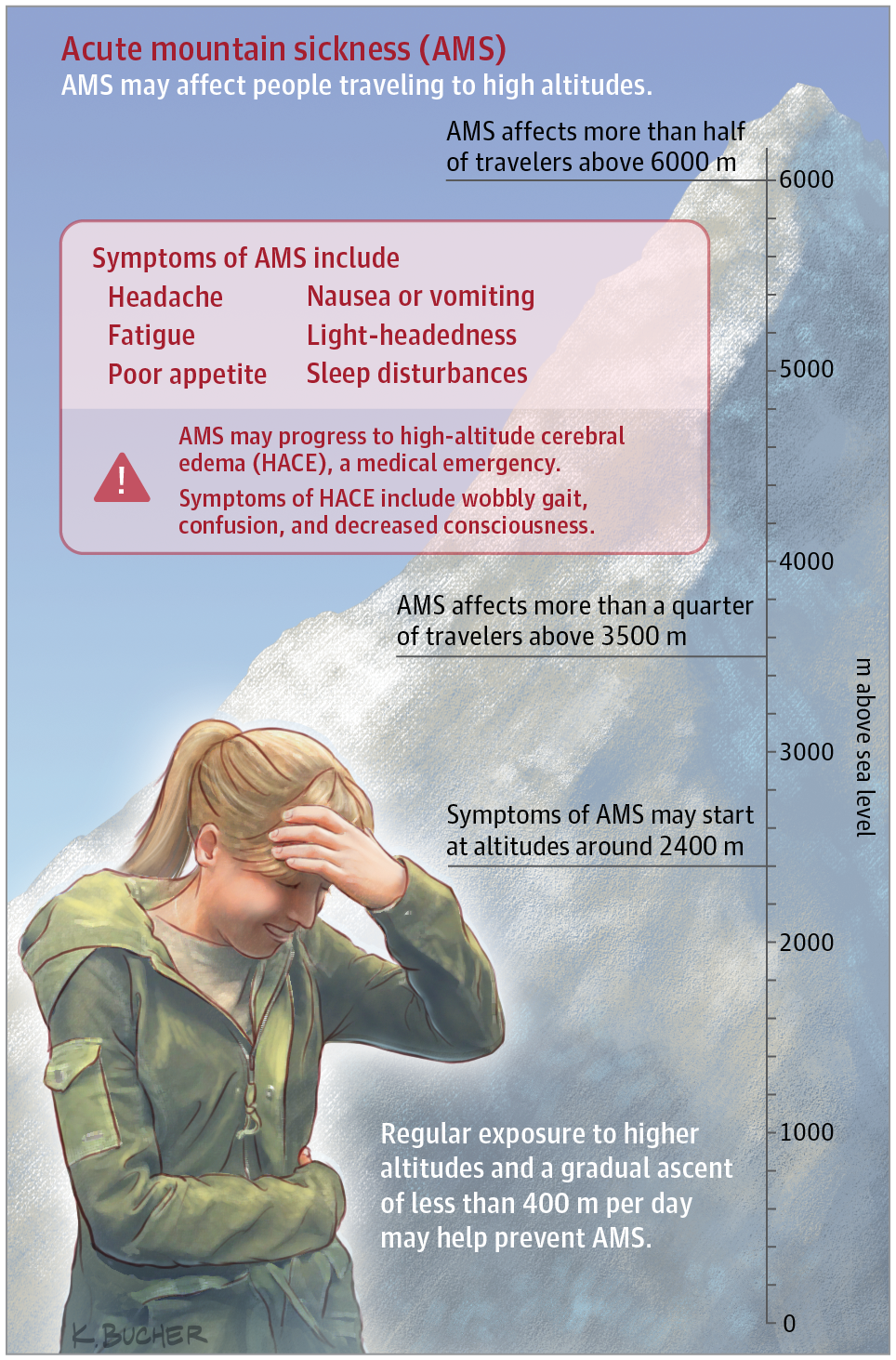Our official English website, www.x-mol.net, welcomes your
feedback! (Note: you will need to create a separate account there.)
Acute Mountain Sickness
JAMA ( IF 63.1 ) Pub Date : 2017-11-14 , DOI: 10.1001/jama.2017.16077 Jill Jin
JAMA ( IF 63.1 ) Pub Date : 2017-11-14 , DOI: 10.1001/jama.2017.16077 Jill Jin

|
It is the most common type of high-altitude illness and occurs in more than one-fourth of people traveling to above 3500 m (11 667 ft) and more than one-half of people traveling to above 6000 m (20 000 ft). Symptoms include headache, fatigue, poor appetite, nausea or vomiting, light-headedness, and sleep disturbances. Symptoms usually occur 6 to 12 hours after ascent and can range from mild to severe. Symptoms usually improve after 1 to 2 days if there is no further ascent, but they can sometimes last longer. In less than 1% of cases, symptoms can progress to high-altitude cerebral edema, a life-threatening condition marked by symptoms of wobbly gait, confusion, and decreased consciousness.
中文翻译:

急性高山病
它是最常见的高海拔疾病类型,在旅行到 3500 米(11 667 英尺)以上的人中超过四分之一,在 6000 米(20 000 英尺)以上旅行的人中超过二分之一。症状包括头痛、疲劳、食欲不振、恶心或呕吐、头晕和睡眠障碍。症状通常在上升后 6 到 12 小时出现,范围从轻微到严重。如果没有进一步上升,症状通常会在 1 到 2 天后改善,但有时会持续更长时间。在不到 1% 的病例中,症状会发展为高原脑水肿,这是一种危及生命的疾病,表现为步态摇摆不定、意识模糊和意识下降。
更新日期:2017-11-14
中文翻译:

急性高山病
它是最常见的高海拔疾病类型,在旅行到 3500 米(11 667 英尺)以上的人中超过四分之一,在 6000 米(20 000 英尺)以上旅行的人中超过二分之一。症状包括头痛、疲劳、食欲不振、恶心或呕吐、头晕和睡眠障碍。症状通常在上升后 6 到 12 小时出现,范围从轻微到严重。如果没有进一步上升,症状通常会在 1 到 2 天后改善,但有时会持续更长时间。在不到 1% 的病例中,症状会发展为高原脑水肿,这是一种危及生命的疾病,表现为步态摇摆不定、意识模糊和意识下降。









































 京公网安备 11010802027423号
京公网安备 11010802027423号